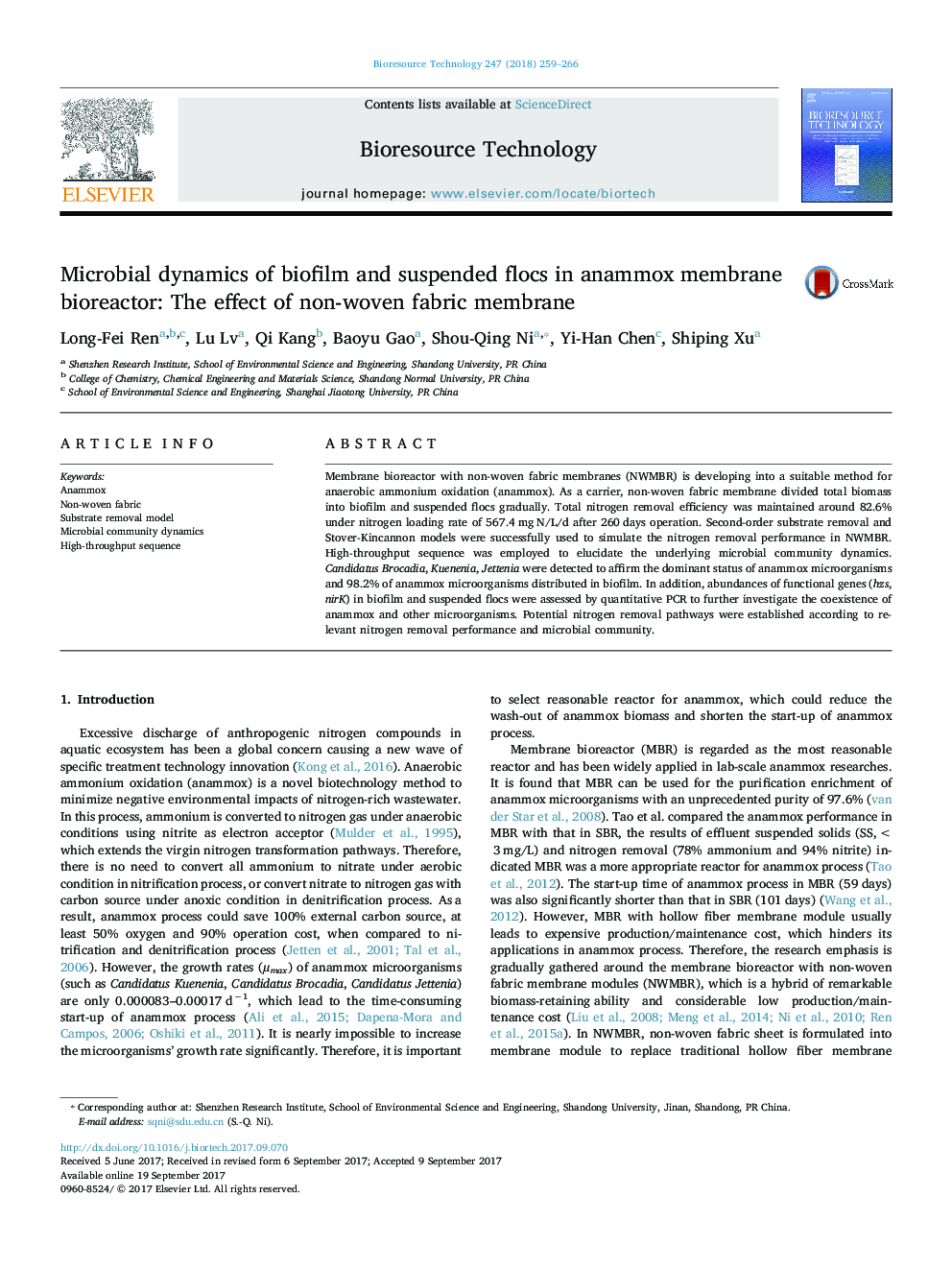| Article ID | Journal | Published Year | Pages | File Type |
|---|---|---|---|---|
| 4996647 | Bioresource Technology | 2018 | 8 Pages |
â¢A novel NWMBR was developed to achieve biofilm formation for nitrogen removal.â¢Non-woven fabric membrane acted as biomass carrier and membrane separator in NWMBR.â¢Biofilm mechanism was investigated via EPS release and substrate removal models.â¢Microbial community dynamics was elucidated to establish nitrogen removal pathways.â¢Anammox coexisted with nitrifiers/denitrifiers to form anammox-driven consortium.
Membrane bioreactor with non-woven fabric membranes (NWMBR) is developing into a suitable method for anaerobic ammonium oxidation (anammox). As a carrier, non-woven fabric membrane divided total biomass into biofilm and suspended flocs gradually. Total nitrogen removal efficiency was maintained around 82.6% under nitrogen loading rate of 567.4 mg N/L/d after 260 days operation. Second-order substrate removal and Stover-Kincannon models were successfully used to simulate the nitrogen removal performance in NWMBR. High-throughput sequence was employed to elucidate the underlying microbial community dynamics. Candidatus Brocadia, Kuenenia, Jettenia were detected to affirm the dominant status of anammox microorganisms and 98.2% of anammox microorganisms distributed in biofilm. In addition, abundances of functional genes (hzs, nirK) in biofilm and suspended flocs were assessed by quantitative PCR to further investigate the coexistence of anammox and other microorganisms. Potential nitrogen removal pathways were established according to relevant nitrogen removal performance and microbial community.
